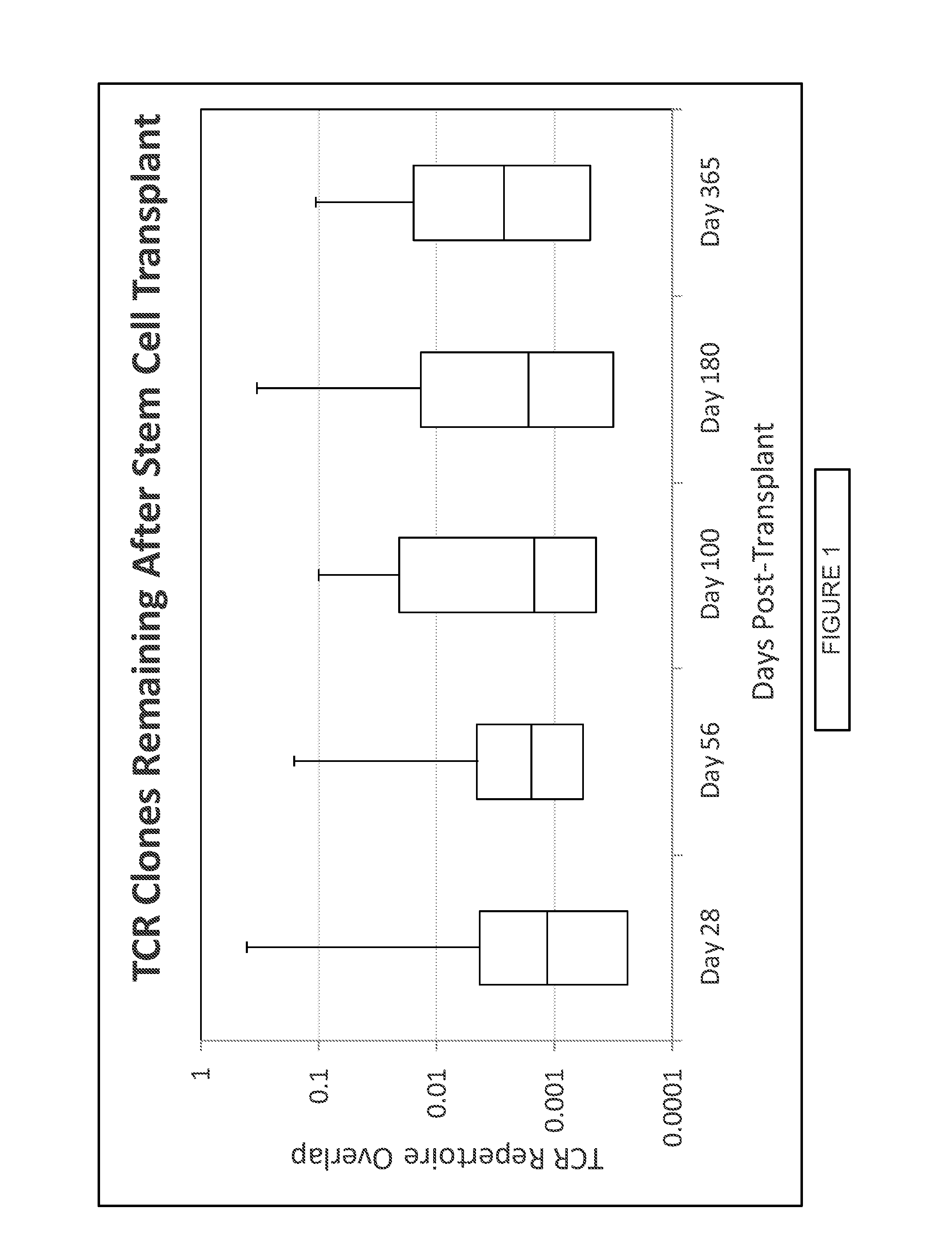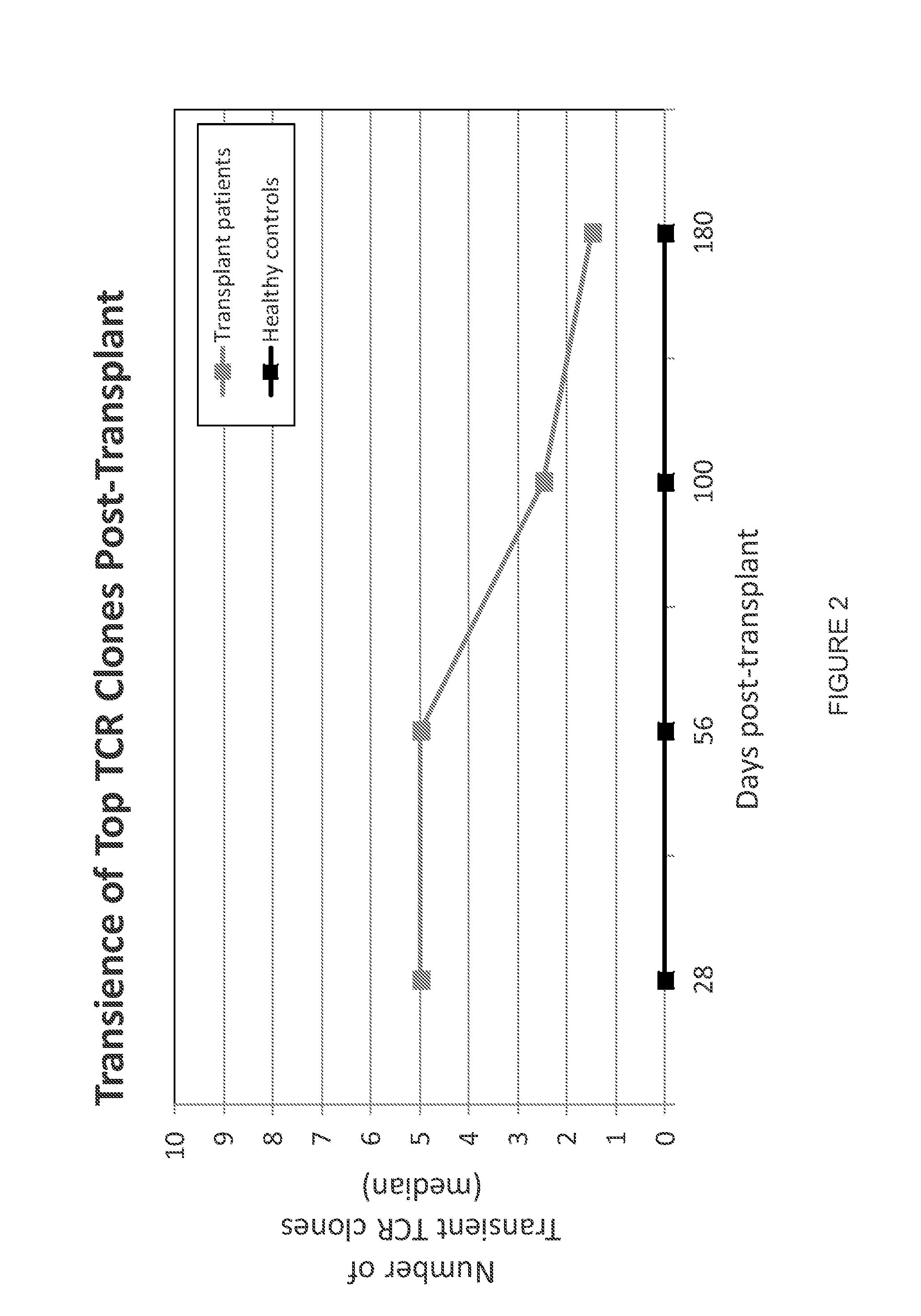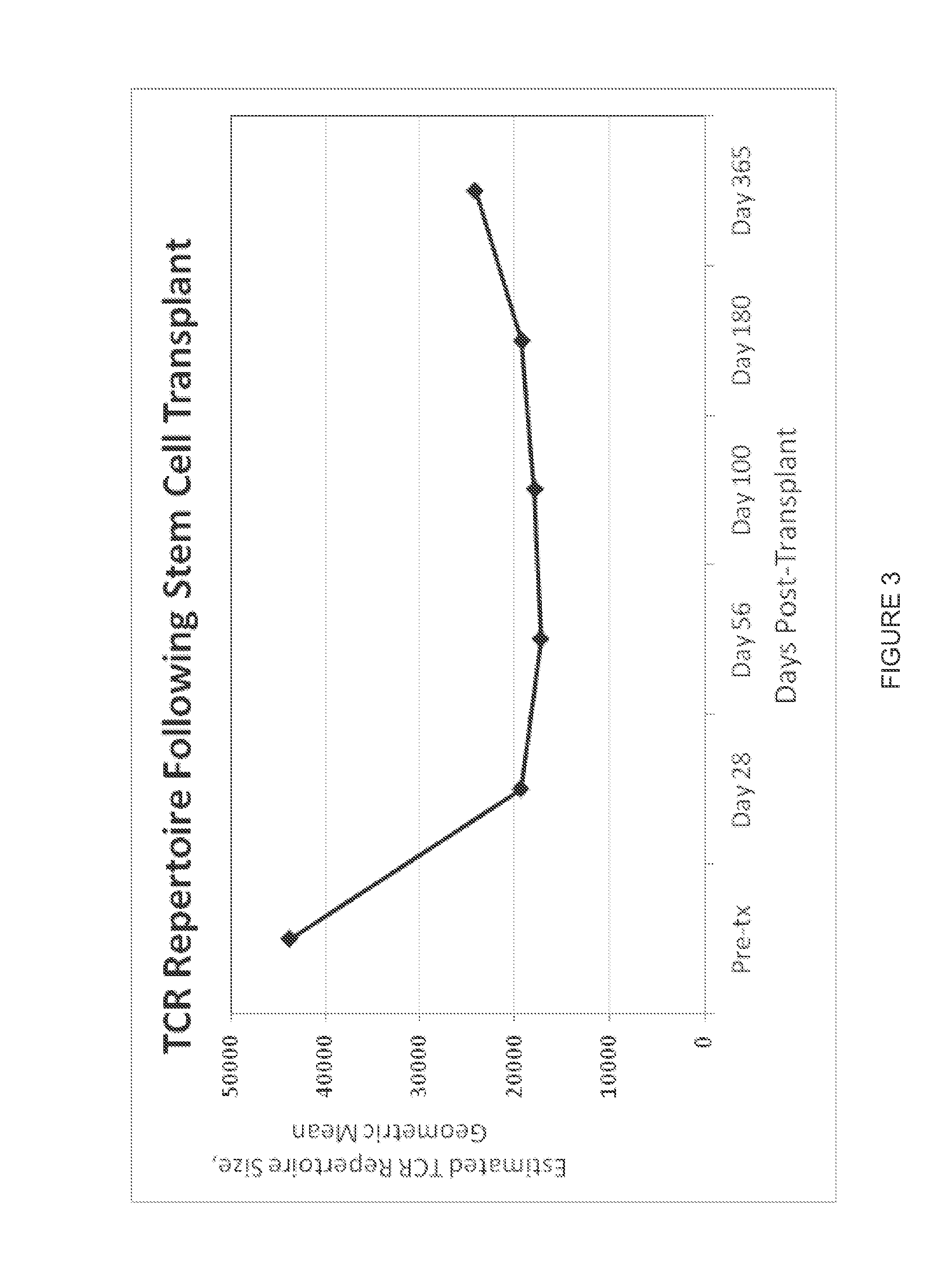Immunocompetence assessment by adaptive immune receptor diversity and clonality characterization
a technology of adaptive immune receptors and immunocompetence, applied in the field of immunocompetence assessment, can solve problems such as difficulties in arriving at effective therapeutic regimens and counterproductively compromising the adaptive immune system
- Summary
- Abstract
- Description
- Claims
- Application Information
AI Technical Summary
Benefits of technology
Problems solved by technology
Method used
Image
Examples
example 1
Cell Receptor Diversity After Umbilical Cord Blood Transplant as Predictor of Mortality from Infection
[0200]This example describes a clinical study in which 34 patients with high risk hematological malignancies were myeloablated and then transplanted with double umbilical cord blood (CB) units. Blood samples were collected at 0, 28, 56, 100, 180, and 360 days post transplant. At each time point, Immunoseq™ high-throughput T cell receptor (TCR) sequencing assay (Adaptive Biotechnologies Corp., Seattle, Wash.) was applied to all samples. The Immunoseq™ data were used to assay the adaptive immune system at unprecedented depth, so that T cell clonal expansion and contraction of hundreds of thousands of T cell clones were tracked over time and TCR repertoire diversity was directly measured. Using the ability to track clones, the adaptive immune system reconstitution was shown to oscillate wildly with an almost entirely new repertoire appearing at least monthly after CB transplant. The la...
example 2
T Cell Receptor Repertoire Distribution as Predictor of Immunotherapy Responders
[0232]T cell receptor diversity and distribution were determined as described above in blood and solid tumor samples, obtained prior to and after initiation of immunotherapy, from cancer patients who were candidates to receive either a CTLA-4 inhibitor or a PD-1 inhibitor. The efficacy of each immunotherapy agent was independently assessed by standard oncology clinical criteria (categorizing subjects as responders or non-responders) and the relative ability of each patient's adaptive immune system to respond beneficially to the immunotherapy was shown to be predicted by a modified entropy calculation of the distribution of the TCR repertoire prior to immunotherapy.
[0233]Before the initiation of immunotherapy (anti-CTLA-4 mAb), responders exhibited relatively higher TCR sequence diversity in lymphocytes present in blood and tumor samples, and higher TCR sequence distribution entropy, observed as a flatte...
example 3
T Cell Receptor Clonality as a Predictor of Immunotherapy Response
[0239]In another example, a study was performed using high-throughput sequencing of the TCRB gene locus to characterize the repertoire of tumor-infiltrating lymphocytes (TILs) in late-stage metastatic melanoma patients undergoing immunotherapy (treatment with an anti-PD-1 antibody). The goal of the study was to determine whether characterization of the intratumoral T cell repertoire by high-throughput sequencing is sufficient to predict clinical outcome (i.e., drug response) using immunological profiling (by TCRB sequencing) of a pre-treatment tumor biopsy.
[0240]T cell receptor diversity and distribution were determined as described above in solid tumor samples, obtained prior to initiation of immunotherapy, from metastatic melanoma patients who were candidates to receive a PD-1 inhibitor (Lambrolizumab). PD-1 (Programmed cell death protein 1) is a type 1 membrane protein, a member of the immunoglobulin superfamily, a...
PUM
| Property | Measurement | Unit |
|---|---|---|
| Fraction | aaaaa | aaaaa |
| Fraction | aaaaa | aaaaa |
| Fraction | aaaaa | aaaaa |
Abstract
Description
Claims
Application Information
 Login to View More
Login to View More - R&D
- Intellectual Property
- Life Sciences
- Materials
- Tech Scout
- Unparalleled Data Quality
- Higher Quality Content
- 60% Fewer Hallucinations
Browse by: Latest US Patents, China's latest patents, Technical Efficacy Thesaurus, Application Domain, Technology Topic, Popular Technical Reports.
© 2025 PatSnap. All rights reserved.Legal|Privacy policy|Modern Slavery Act Transparency Statement|Sitemap|About US| Contact US: help@patsnap.com



